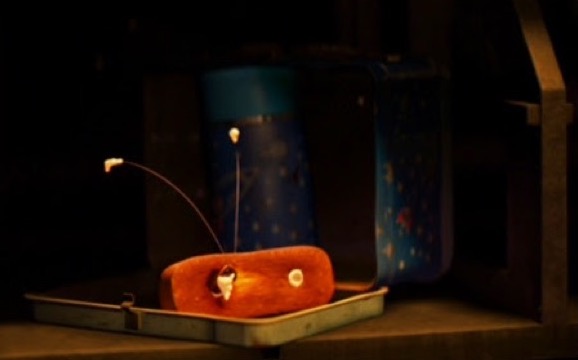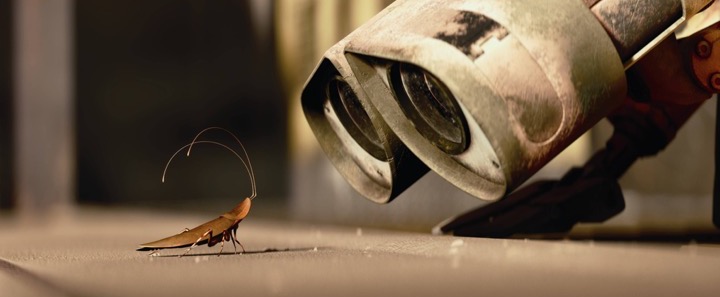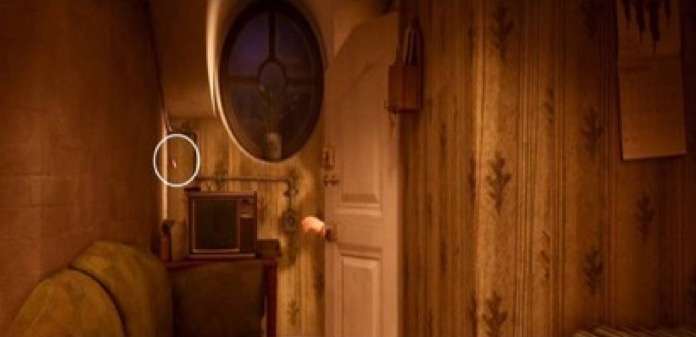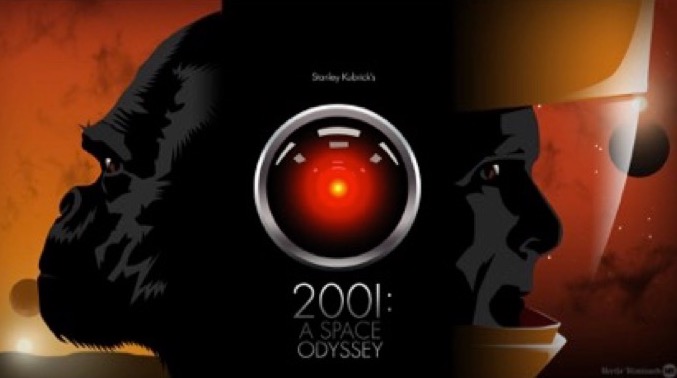In its depiction of a film-world defined by its lack of natural life, Pixar’s WALL-E (2008) features only one animal: WALL-E’s charismatic companion, Hal the cockroach.
An idea that spread during the 1960s after it was reported that cockroaches survived Hiroshima and Nagasaki, the myth that cockroaches would be the only beings to survive a nuclear apocalypse has long since shaped common knowledge of the species. In playing on this preconception and in its allusion to the 1969 film Hello Dolly!, WALL-E places the events of the film in line with events in real life, and in particular the events of the 1960s and 70s. Through the music of Hello Dolly!, the appearance of various retro objects (the rubik’s cube, for example) and Hal’s connection to ideas of nuclear apocalypse that reflect anxieties about the atom bomb that were around at the time, the film uses pop culture from the world beyond its fantasy to pose questions about the real potential for humans to be their own self-destruction, in contrast to the ability of cockroaches to survive it.
Beyond its ability to contextualise the events of the film, the music used in WALL-E is also used for comic effect. The first time this is demonstrated is in the scene where WALL-E runs Hal over. As Hal is squashed, the music and therefore comedy is suspended; however, it continues as we are reassured that Hal, like the cockroaches of urban myth, is indestructible.
Another way in which WALL-E challenges our preconceptions of vermin is in the film’s treatment of Hal as a character in his own right. Instead of being captured from above, re-enforcing the physical separation between filmmaker and insect, the camera captures Hal’s movements by moving in line with him, along the floor. This is mirrored when, after accidentally running Hal over, WALL-E leans down to check he is still alive (which, of course, he is because he is a cockroach). WALL-E’s treatment of Hal serves to question the ways in which humans both treat and think of vermin, much in the way Ratatouille does. As part of Pixar’s characteristic self-referentiality that appears across their films, Hal has been spotted making an appearance in Ratatouille. Showing that Hal’s persistent and indestructible presence exists beyond the confines of WALL-E, Pixar places the two verminous and charismatic characters of Hal and Remy alongside each other, challenging our pre-existing ideas about the place of vermin in our sympathies. Similarly, WALL-E and Hal are brought together in the ways they challenge preconceptions that surround their respective ‘species’ (Hal in his ‘cuteness’ and WALL-E in his ability to feel emotion), and in physically placing them in the same shot, Stanton invites us to draw parallels between them. They are connected because they are the last two left on Earth, but also by their non-humanness, and the collective nature of the ‘species’ they come from. As cockroach and robot, both Hal and WALL-E conventionally belong to a collective, but are individualised and brought together through their ability to survive, becoming all the more endearing as a result.
The individualisation of Hal is also demonstrated in the way he moves. In his dog-like movements, Hal is characterised as WALL-E’s playful, often disobedient pet. He dutifully follows WALL-E’s every move, sits, stays, or heels, and loyally waits for him to return from space. Despite the portrayal of cockroaches being largely positive, the position of Hal as a dog-like figure complicates this, as it suggests that cockroaches should be individual and domesticated to be treated favourably; something that cockroaches naturally are not.
Through the playful evocation of cockroach folklore and the elevation of Hal to character-worthy status, the film confounds of our expectation of vermin, whilst allowing its filmmakers to make a wider point about the possibility of the world the film illustrates. In WALL-E, cockroaches are anything but insignificant; however, they must lose their collective ‘wildness’ in favour of being individual, domesticated animals to gain film-worthy status like Hal does.



